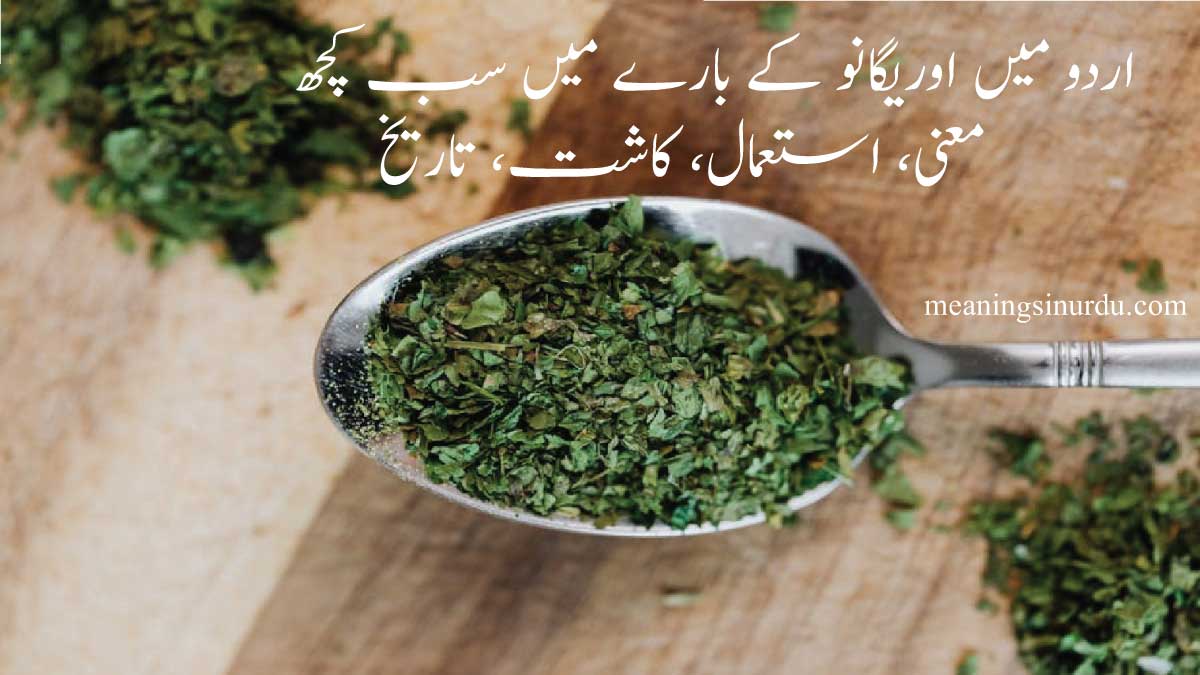In Urdu, Oregano is called اجوائن کے پتے (Ajwain Ke Patte). The term Ajwain Ke Patte consists of the words اجوائن (Ajwain) and پتے (Patte), referring to the leaves of the oregano plant. Though the name Ajwain is often associated with a different herb (Carom seeds), in culinary contexts, it’s used to denote oregano in Urdu-speaking regions.
Introduction to Oregano in Urdu
Oregano, known in Urdu as اجوائن کے پتے (Ajwain Ke Patte), is a versatile herb with a distinctive flavor and numerous culinary uses. Originating from the Mediterranean region, oregano has become a staple in many cuisines around the world, including in Urdu-speaking regions. This herb is valued for its aromatic leaves, which add a robust flavor to various dishes. Whether used in cooking or traditional medicine, Oregano holds a special place in both contemporary and traditional practices.
What is Oregano in Urdu?
In Urdu, Oregano is referred to as اجوائن کے پتے (Ajwain Ke Patte). The term Ajwain is commonly associated with carom seeds, but in the context of herbs, it refers to oregano leaves. Oregano is known for its strong, pungent flavor and is often used in seasoning dishes, particularly those inspired by Mediterranean and Italian cuisines. Ajwain Ke Patte are appreciated not only for their flavor but also for their potential health benefits. They are used in various culinary preparations to enhance the taste of food.
Oregano in Different Languages
| Language | Name |
|---|---|
| Urdu | اجوائن کے پتے (Ajwain Ke Patte) |
| English | Oregano |
| Hindi | ओरेगानो (Oregano) |
| Arabic | زعتر (Za’atar) |
| Spanish | Orégano |
How to Use Oregano in Urdu Cuisine
Oregano is widely utilized in Urdu cuisine to impart a unique and aromatic flavor to various dishes. Here’s how Ajwain Ke Patte are commonly used:
Seasoning: Oregano leaves are often used as a seasoning in dishes like pizza, pasta, and roasted vegetables. The herb’s strong flavor complements a range of foods.
Herbal Teas: Ajwain Ke Patte can be steeped to make herbal teas, which are believed to aid digestion and provide a soothing effect.
Chutneys: Fresh or dried Oregano leaves are sometimes added to chutneys to enhance their flavor and add a touch of herbal aroma.
Soups and Stews: Oregano is also used to flavor soups and stews, adding depth and complexity to the dishes.
Popular Uses of Oregano
| Dish Type | Use of Oregano |
|---|---|
| Seasoning | Added to pizzas, pasta, and roasted vegetables |
| Herbal Teas | Steeped to make soothing herbal teas |
| Chutneys | Mixed into chutneys for added flavor |
| Soups and Stews | Used to enhance the taste of soups and stews |
Growing Oregano at Home (اجوائن کے پتے کو گھر میں اُگانا)
Growing Oregano at home is quite manageable with the following tips:
Climate: Oregano thrives in warm climates but can also be grown indoors. It prefers a sunny location with plenty of light.
Soil: The herb grows best in well-drained soil. A mix of potting soil and sand can be ideal. Ensure the soil has a pH of 6.0 to 8.0.
Planting: Oregano can be grown from seeds or transplants. Space plants about 6-12 inches apart to allow for spreading.
Care: Water regularly but avoid waterlogging. Allow the soil to dry out between waterings. Prune the plant periodically to encourage bushier growth and to prevent it from becoming too leggy.
Cultural Importance of Oregano in Urdu Tradition
Oregano, or اجوائن کے پتے (Ajwain Ke Patte), holds a significant place in Urdu culinary traditions. While it is not native to South Asian cuisines, its use has become more common due to global influences. Ajwain Ke Patte are appreciated for their aromatic qualities and are often included in dishes that require a robust herbal flavor. The herb’s versatility makes it a valuable addition to various recipes, and its growing popularity reflects the blending of traditional and modern culinary practices in Urdu-speaking regions.

